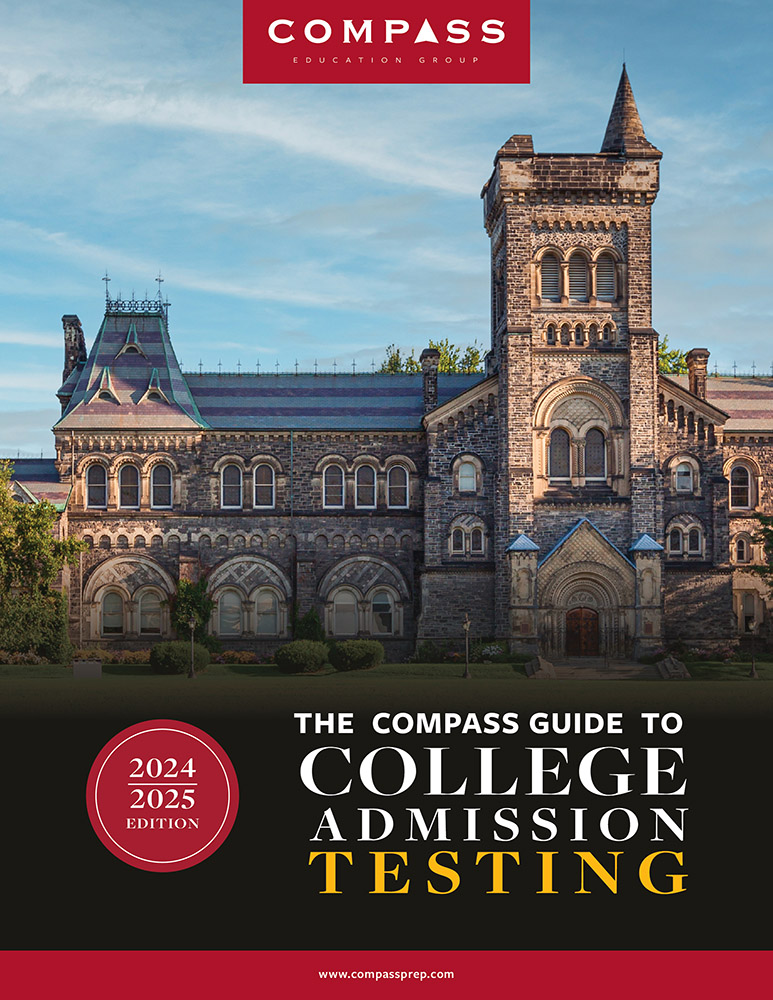
Within the last decade, the disciplines of cognitive science and neuropsychology have exploded thanks to new technology and revelations about the structure and function of the human brain. We now know that human brains have different developmental trajectories that affect our learning preferences and the speed at which we process and encode information. This knowledge has had a huge impact on the field of education, compelling educators to individualize their teaching in accordance with the diverse neurological profiles of their students.
Due in part to emerging notions of neurodiversity, it is no wonder that students are more frequently obtaining accommodations in school and on standardized tests. In fact, in 2013, ACT approved almost 90% of requests for accommodations by test-takers – 4% of all individuals who took an official test. Similarly, out of the total number of test-takers who took the SAT in 2013, nearly 40,000 received some sort of accommodation.
In this post, we will examine popular test-taking accommodations for college admissions tests and map out the process of applying for accommodations. We will also consider implications for test prep and return to the topic of neurodiversity and the de-stigmatization of learning disabilities (LDs).
A Menu of Test-taking Accommodations
For both the SAT and ACT, typical accommodations include extended time, computer use for essays, extra and extended breaks, and reading and seeing accommodations. These accommodations are usually recommended for students with mild to moderate LDs, including ADHD, anxiety, and slight visual processing issues. Students with more severe LDs, including major visual impairment, dyslexia, and dyscalculia, may have access to readers, scribes, and large-format test booklets (to name a few). There is an incredible spectrum of potential accommodations for students with LDs; and when families send in their request forms, they can be highly specific in the sorts of accommodations that will be most beneficial to their kiddos.
Even if their initial requests aren’t granted, families – and their professional team of psychologists, school administrators, and teachers – can appeal and submit additional documentation to secure the desired accommodation (we’ll return to this topic later).
The Nuances of Extended Time
Because extended time is the most common accommodation granted by ACT and the College Board, it’s worth a closer look. As it was mentioned before, students with mild LDs are usually permitted 50% extended time on the SAT and ACT; however, the nature of extended time is differently administered by the College Board and ACT. For one, 50% extended time on the SAT typically means that students will have time-and-half to complete each discrete section of the exam. Testers are not permitted to move ahead if they finish a section early, nor are they able to review previously completed sections. In other words, extended time on the SAT is not self-directed. Ultimately, this means that students must sit for over 6 hours of test-taking in a single day – a harrowing prospect for those with distractibility issues.
In contrast to the College Board’s application of extended time, the ACT permits self-directed extended time. For instance, students who receive 50% additional time are given 5 hours to move through the multiple choice portions of the test and may finish the exam prior to the full allotment of time. They are then given 45 minutes to complete the optional ACT essay.
It’s important to note that extended time does not necessarily apply to breaks between sections. If a student would benefit from additional or extended breaks rather than extra testing time, it’s important that the accommodations request specifies this and includes the appropriate documentation.
Although extremely rare, a small number of qualified applicants are granted 100% extended time, or, ‘double-time.’ For the ACT, double-time is akin to the holy grail of accommodations. Students who receive it are often able to take the test across multiple testing days, one section administered per day. As you can imagine, students taking the ACT across several sittings are spared from the mental fatigue induced by many hours of testing.
The Necessity of Documentation
In order to qualify for an accommodation, families must submit evidence of a diagnosed LD and a history of LD-specific support utilized by the school. Students who are most often denied for accommodations: 1) have formal documentation for very recent diagnoses, 2) do not receive school-based support, 3) have outdated documentation, or 4) demonstrate stellar performance in school without additional support.
For students enrolled in public school, families work in collaboration with a school psychologist and the school disability coordinator to obtain psychological testing, evaluate the results, and enact interventions that are outlined in either an Individualized Education Plan (IEP) or 504 plan. Because private schools are not obligated (or equipped) to administer testing, parents of students at these schools often seek independent evaluations from licensed neuropsychologists.
The College Board and ACT clearly map out the documentation needed in accommodations requests. If a psychological report is required, ACT states that the report can be no more than 3 years old. The College Board, however, will accept reports that were conducted 5 years prior to the request. If testing does not occur until adolescence, it is recommended that students wait until they are 16 and are assessed on adult-scaled measures (e.g. the WAIS – the adult version of the popular child IQ test, the WISC). The results of adult-scaled tests can later be used to secure disability services in college, whereas students with assessments prior to age 16 must undergo the rigmarole of re-testing to qualify.
The Application Process and Timing of Requests
For most students – especially those attending public school – the request and all of the attached documentation will be submitted by the school disability coordinator. Private schools will often have a designated ‘LD Specialist’, typically in their college counseling offices, who will physically complete the request. The College Board has an online application whereas ACT requires paper-and-pencil forms.
The optimal moment for submitting requests depends on 1) the test date that the student is targeting, 2) her current grade level, and 3) the turnaround time of the College Board and ACT.
For most students, the first official SAT or ACT is taken during junior year, usually between the months of February and June. Students requesting accommodations will want ample time between the request submission and the registration deadlines of the tests. This is especially true for SAT-takers, who will not receive a response from the College Board until 7 weeks after the last piece of documentation is received. Any lingering documents that make their way to the College Board after the initial request will reset the timer and greatly delay the process. ACT is a bit more forgiving in their responsiveness, notifying families of approved accommodations within 4 weeks of the request.
After reviewing applications, ACT will send a letter to the student that will list approved accommodations, or, will explain grounds for rejecting the application. The letter contains a reference number that will enable the student to register for the ACT and select a testing site that is equipped to handle the student’s testing needs (e.g. a private room, extended time with other students, multi-day testing in a single location, etc.). Similarly, the College Board sends students a Services for Students with Disability (SSD) number, which is valid for all College Board exams, including the SAT, SAT Subject Tests, PSAT, and AP exams.
As a rule, if students are aiming to take the ACT during the fall or winter of junior year, they should apply for accommodations during June of 10th grade. Test-takers shooting for the fall SATs or PSAT should apply for accommodations earlier in the spring of 10th grade (March through May).
The Appeal Process
Should the accommodations request be rejected, families and schools may appeal the rejection by submitting additional documentation, letters from specialists that reinforce specific accommodations, or by undergoing further testing to meet the evaluative criteria of the testing agency. As it was mentioned earlier, there is also a chance that the accommodations granted do not fully meet the testing needs of the students, or, they make the exams even more arduous (e.g. ADHD and too much extended time).
If there is any concern about rejection, especially if a student only recently obtained testing, or, if the school has no history of providing accommodations to the student, it’s best to anticipate a rejection and build in extra time for an appeal.
Considering Test Preparation
Compass recommends that students know about potential accommodations prior to taking practice tests or delving too deeply into prep. We offer proctored practice tests with extended time in our Northern and Southern California offices – along with a short list of other accommodations – which allow us to accurately predict performance on official tests and create more individualized plans for preparation.
By having a full understanding of students’ LDs and necessary accommodations, our tutors are better able to adapt their teaching methods and curricula to students’ learning profiles. Taking more frequent breaks, aligning lessons with students’ preferred learning modalities, and emphasizing tactics for combatting test anxiety are examples of strategies that our instructors can incorporate into sessions when appropriate.
Final Thoughts: Removing the Stigma of LDs
Although we often see families jump for joy when the right accommodations are approved, we realize that students may have mixed feelings about receiving ‘special treatment’ on tests. Teens are sensitive to qualities that make them different from their peers, especially in the case of LDs, which are commonly (and wrongly) construed as deficits in intellect and ability.
As educators, it is our duty to de-stigmatize LDs by teaching families about neurodiversity – the manifold developmental trajectories of the brain – and helping students understand that every mind has its respective strengths and areas of growth. It just so happens that college admissions tests favor a particular kind of brain, one that is skilled at quick-processing, focus, and resilience under pressure. These skills come easily to a small fraction of students, but for others, particularly those with LDs, they must be developed and scaffolded with the support of accommodations. Students who are able to clearly identify their learning needs, remediate them, and advocate for available support are not only likely to perform highly on standardized tests; they are primed for success in college and in their future careers.
For more information about applying for accommodations, or, general questions about test prep, please contact a Compass director. You can also email the author of this piece, Matt Steiner, at matt@compassprep.com.

